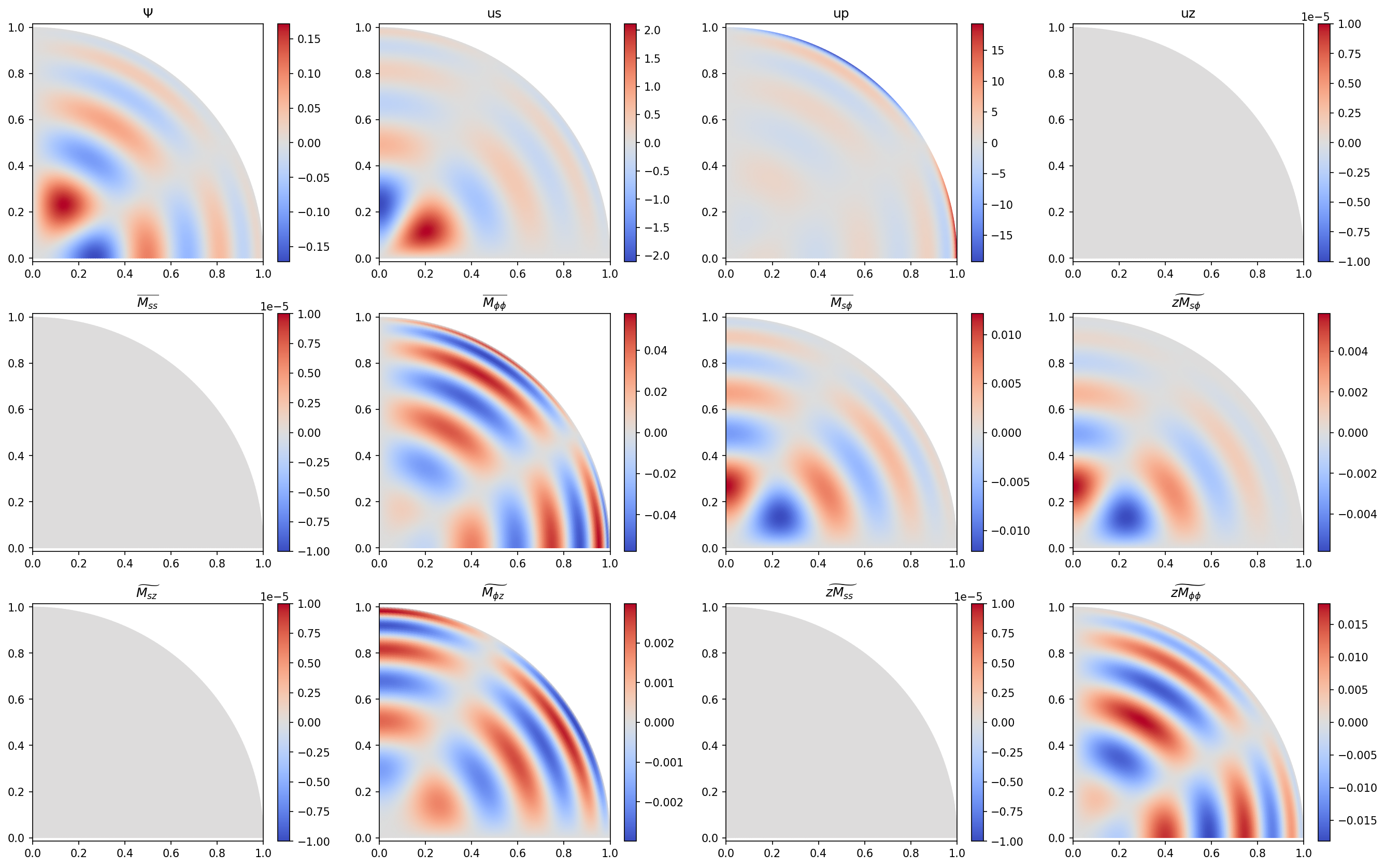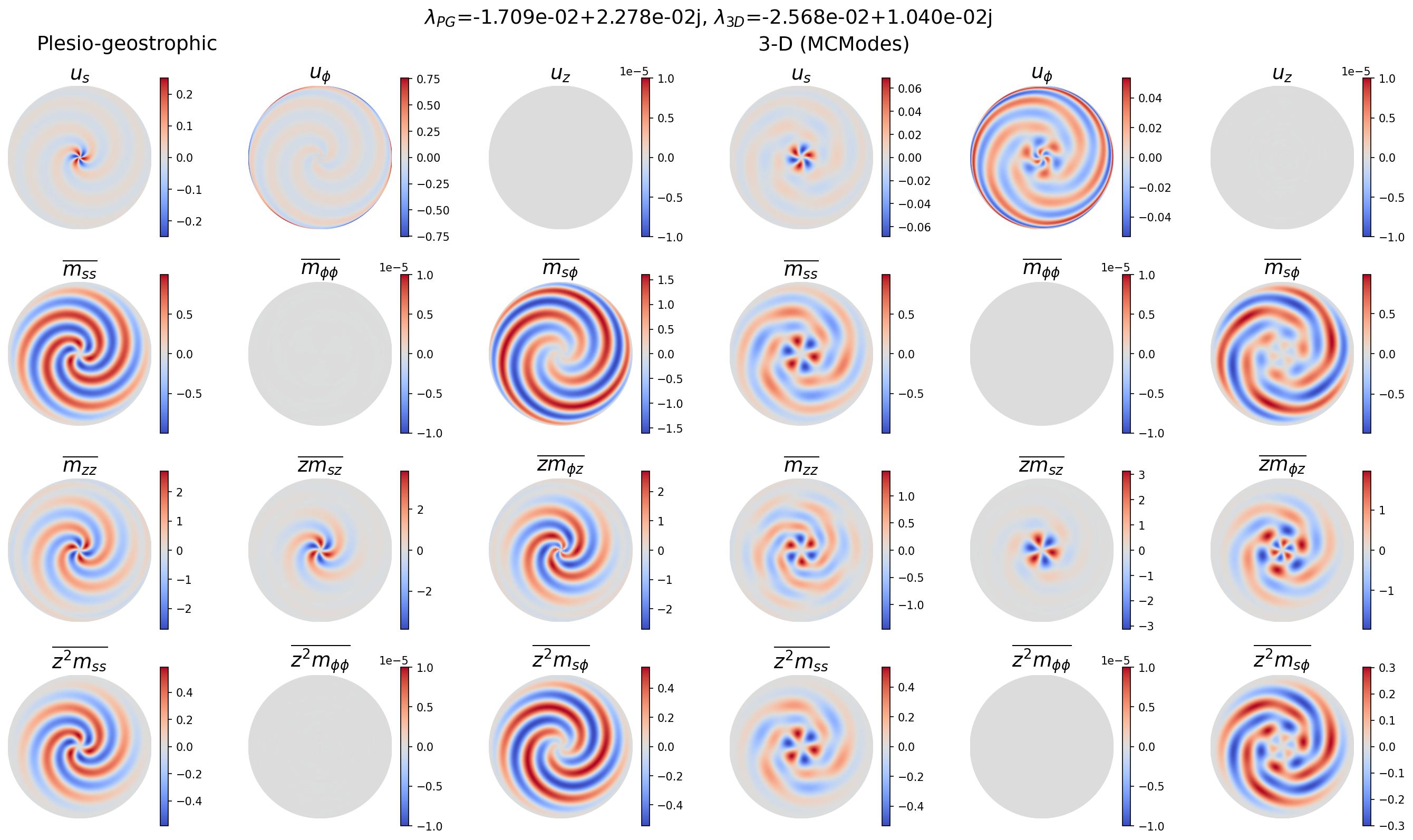Geomagnetic data assimilation under Plesio-Geostrophy
Ongoing project (2023-)
Plesio-Geostrophy Model, or PG, is a reduced-dimensional model for 3-D magnetohydrodynamics (MHD) in rapidly rotating sphere. This is proposed by Jackson and Maffei (2020), and also contituted part of the doctoral work of Holdenried-Chernoff (2021).
The current ongoing implementation of PG model is the Python package PlesioGeostroPy. Figure below visualizes an eigenmode solved using this code.

PG eigenmode solved under S1 background field.

A magneto-Coriolis (MC) mode solved under S1 background field, comparison between PsG (new variant of PG) and 3D results
Theory paper and reference material
- Theory and concept paper, Jackson and Maffei (2020).
- Daria Holdenried-Chernoff’s doctoral thesis (2021).
Formulation, documentation and results
- [PDF] Formulations for PG model: missing ingredients and new recipes. Recent updates:
- Energy calculation: in progress
- Multi-precision calculation: in progress
- [PDF] Results of the PG model.. Recent updates:
- Hydrodynamic results added, equations and numerical analysis complete.
- Malkus field results added, equations complete.
- Poloidal dipolar field results added, equations complete.
- [PDF] Regularity conditions for general tensors in polar coordinates.
Code and demos
- [Repo] PlesioGeostroPy.
- [Documentation] PlesioGeostroPy.
- [IPython notebook] Regularity conditions on tensor components in polar coordinates.
- [IPython notebook] Quickstart for PlesioGeostroPy, alternatively view using nbviewer. Further code-specific tutorials, please refer to the documentation page.
- [IPython notebook] Eigenvalue solver for PG model.
- [IPython notebook] Demonstrative tests, currently includes
- Using recurrence relation for evaluation of Jacobi polynomials,
- Using product form to calculate the inner product matrices,
- Multi-precision libraries, precision and efficiency tests, and calculating matrices in multi-prec,
- Basis functions for vorticity and velocity components.